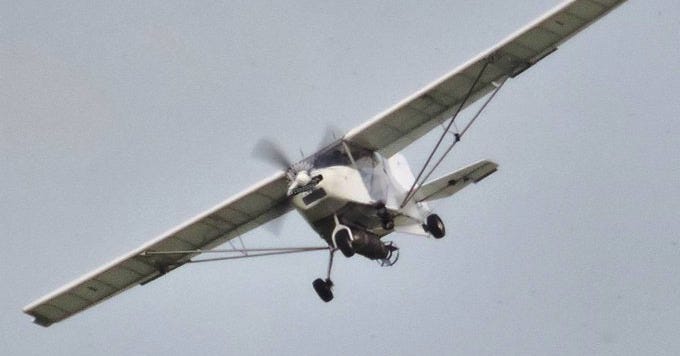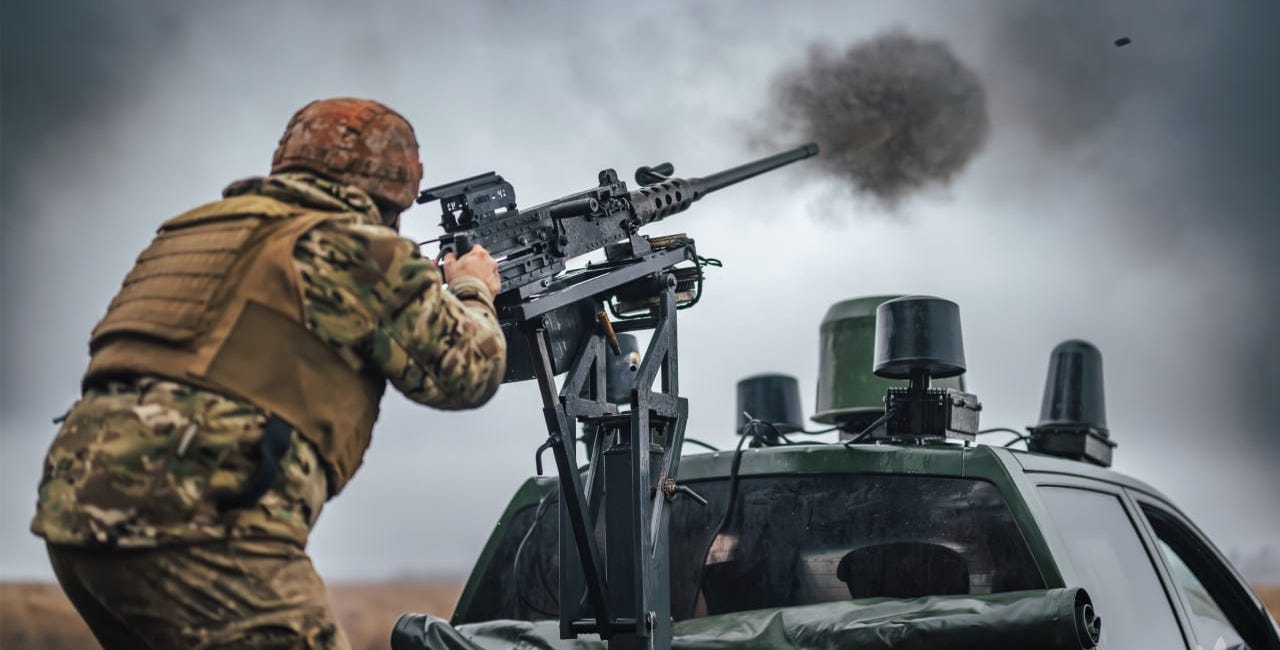Behold Ukraine's New Long-Range Bomber
The Skyranger Nynja hauls a 250-kilogram bomb as far as 1,200 miles
The first evidence that Ukraine was developing a drone bomber from the Skyranger Nynja, a propeller-driven sport plane with a 31-foot wingspan, appeared on Russian social media on April 26, 2024.
Photos depicted a pilotless Nynja upside down on a field in Russia, clearly following a failed air raid. The drone carried a camera gimbal under its nose—and a 250-kilogram FAB bomb under its belly.
At the time, observers including naval expert H.I. Sutton assumed the Nynja drone, which is broadly similar to Ukraine’s Aeroprakt A-22 sport plane drone, was a one-way, single-use asset. A kamikaze drone that explodes on impact.
But now we have a fresh photo of the Nynja drone and a second official confirmation that the UAV is a there-and-back bomber that can drop its bomb and return to base for further sorties. “This is such a drone, which has proven itself very cool and which really can bring in the 250-kilogram FAB and just drop it on the heads of the Russians,” Casper, the commander of the Ukrainian Unmanned Systems Forces’ 1st Battalion, 14th UAS Regiment, said in a July 26 interview.
The USF had previously confirmed it operated a reusable bomber in a Jan. 31 social media post. The command “confirms the use of a long-range UAV capable of carrying a 250-kilogram air bomb and reaching up to 2,000 kilometers”—or 1,200 miles—“with the possibility of return. This is a unique development that changes the rules of the game on the battlefield.”
Far flier
The 1,200-mile endurance implies a 600-mile range, meaning a Nynja drone could strike targets hundreds of miles past Moscow. There are longer-ranging Ukrainian drones, but not many—and not by much. A Nynja cruises at a speed of around 100 miles per hour.
The Nynjas have impressed the Russians, who have taken potshots at the drones flying overhead—usually unsuccessfully. Russian troops in occupied southern Ukraine griped about the drone’s “high-speed” and “precise” strikes, according to one popular social media channel.
To the USF, the Nynja’s best quality might be its low cost—a kit is priced as low as $55,000—and its local production. Skyranger is based in the United Kingdom but a Kyiv firm, Aeros, builds most of the components. There are around 1,600 Nynjas worldwide; it’s unclear how many the USF has acquired.
The downside is that a 250-kilogram bomb isn’t super destructive to the deep targets that matter most: Russia’s oil refineries, air bases and drone factories. But it’s all a Nynja can carry if it’s going to fly 1,200 miles there and back.
According to Tatarigami, founder of the Ukrainian Frontelligence Insight Analysis group, “drones that can fly that far typically can’t deliver the kind of payload needed to inflict serious or lasting damage to a facility” the scale of Russia’s Shahed drone factory in Yelabuga, which sprawls across 1.7 million square feet in Yelabuga, 800 miles from the Russia-Ukraine border.
Ukraine has hit that factory more than once, but never hard enough to dent its output: hundreds of the 440-pound Shaheds every day. “Targets like this should be neutralized through carpet bombing or multiple missile strikes aimed at production bottlenecks,” Tatarigami explained. But “at present, Ukraine lacks the capacity to conduct such operations.”
Unless and until the USF can deploy a lot more Nynjas and similar drones, Ukraine’s long-range drone strikes are no worse than an annoyance for the Kremlin.
Special operations such as the Ukrainian state security service’s smuggled drone raid, which destroyed as many as 14 Russian bombers and other warplanes at four air bases across Russia on June 1, are potentially more damaging. But only against lighter targets—and only with a lot of expensive preparation. The June 1 Operation Spider Web required 18 months of careful planning.
Read more:
Ukraine Needs to 'Carpet Bomb' Russia's Shahed Drone Factory
Russia is poised to fling as many as 1,000 Shahed attack drones at Ukrainian cities every day. Struggling to intercept enough of the 440-pound Shaheds right before they strike, the Ukrainians are trying to defeat the drones “left of the boom”—by bombarding Russia’s Shahed factory in Yelabuga. (See the production line in the video above.)




The intrusive thoughts of improvised bomb delivery has gotten me wondering when we will see UnManned Ultralights and Powered unmanned paragliders for low and slow nighttime drone strikes on targets